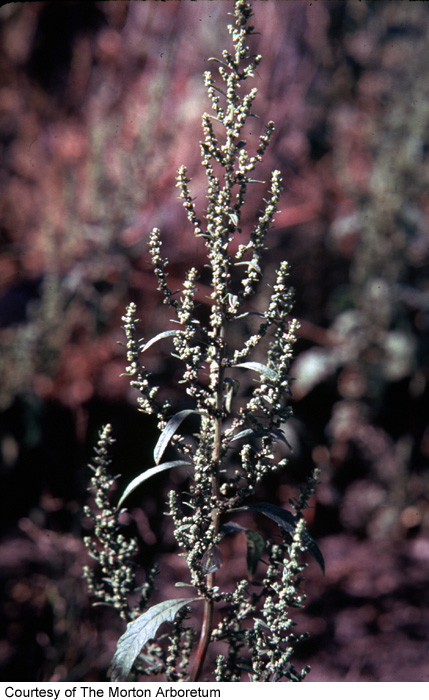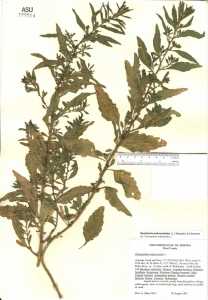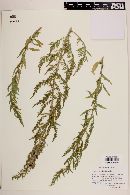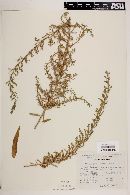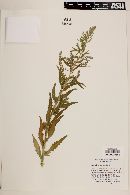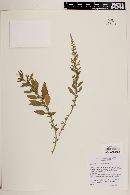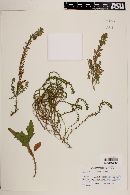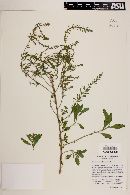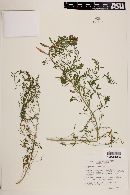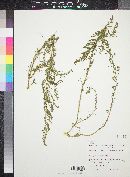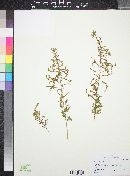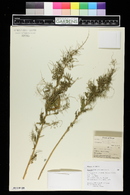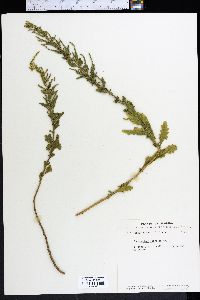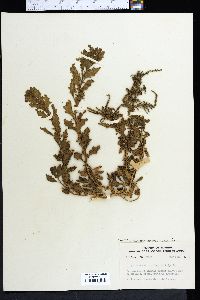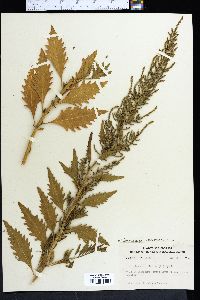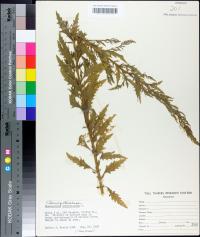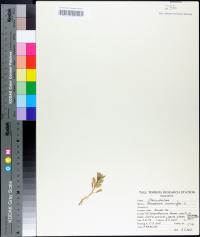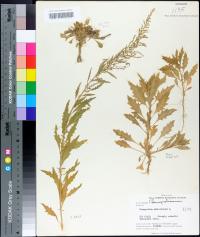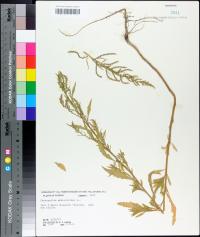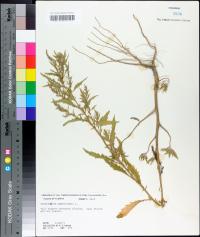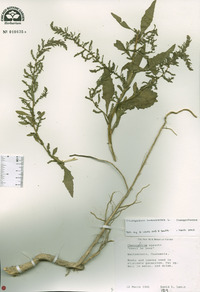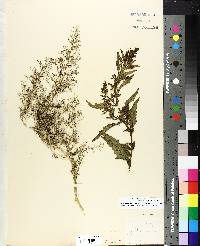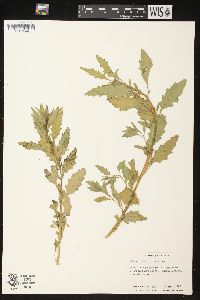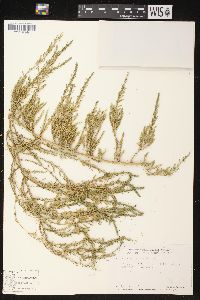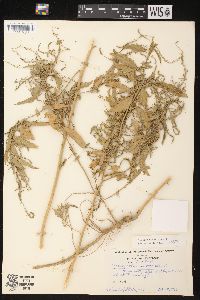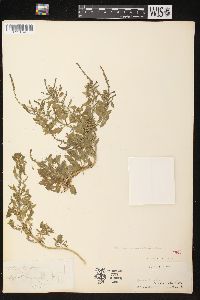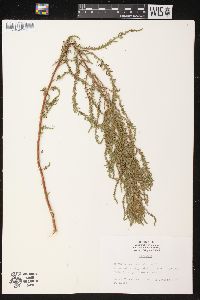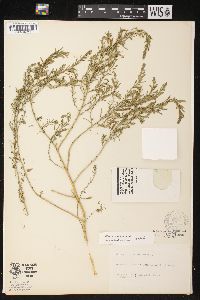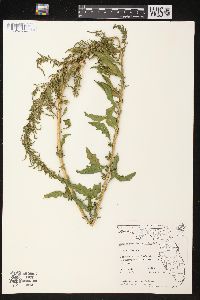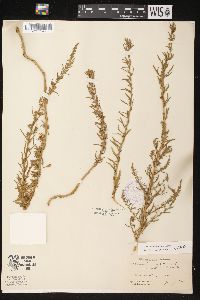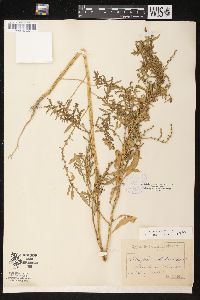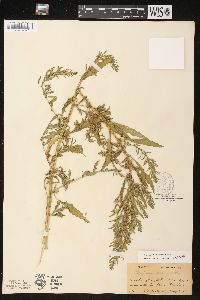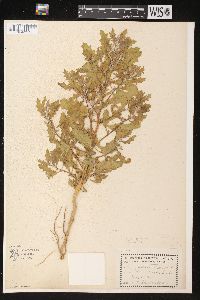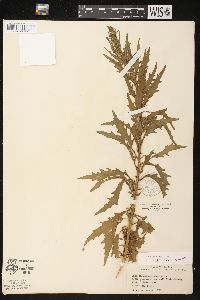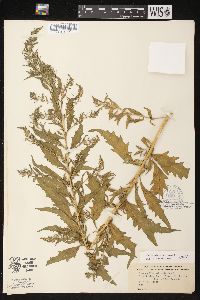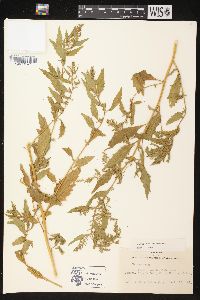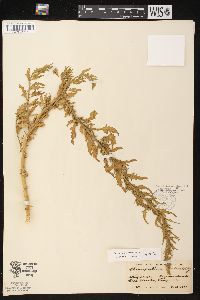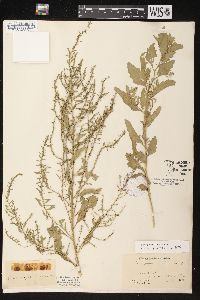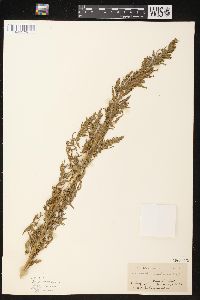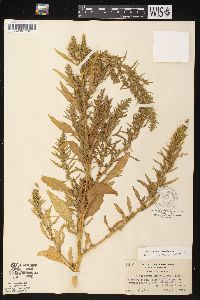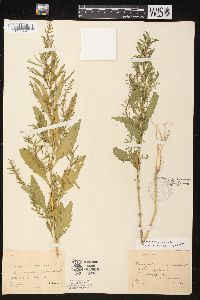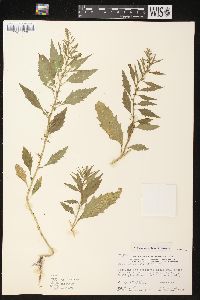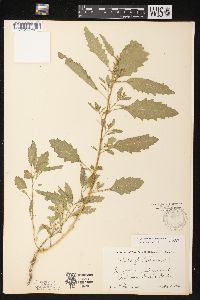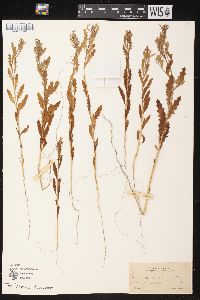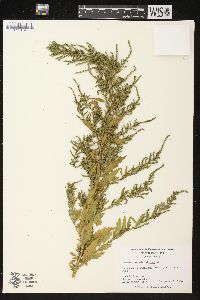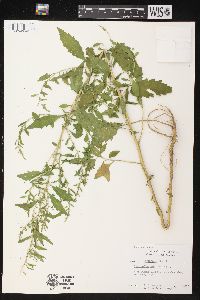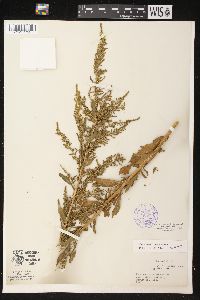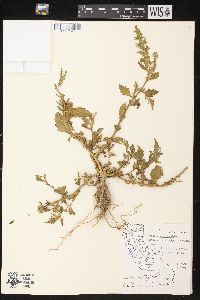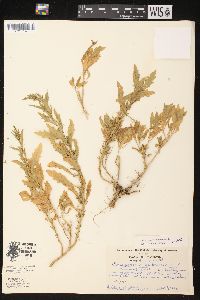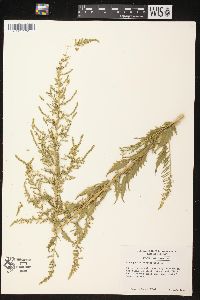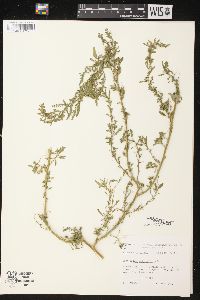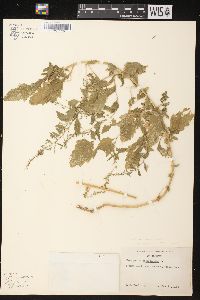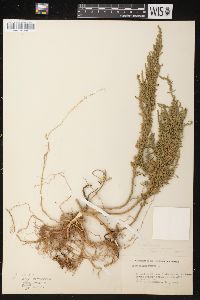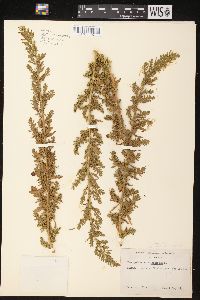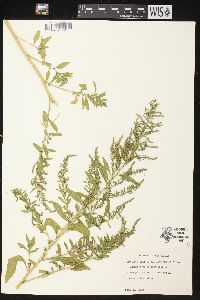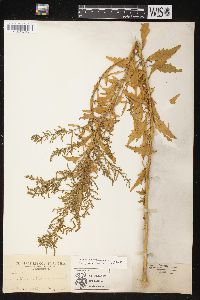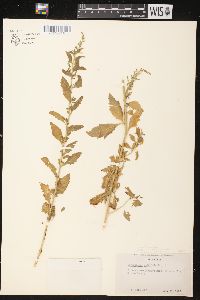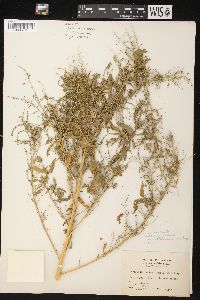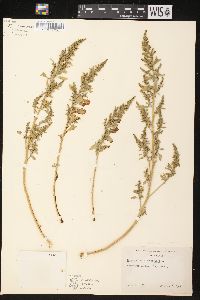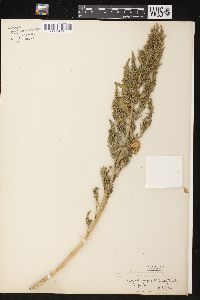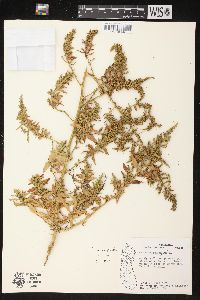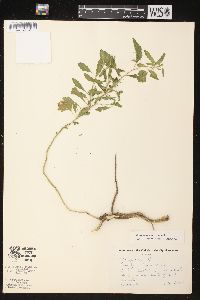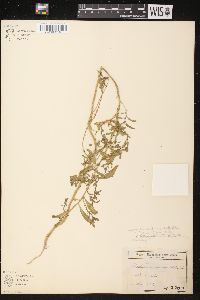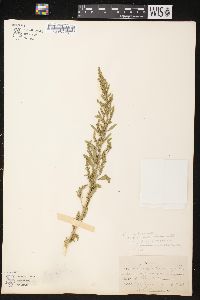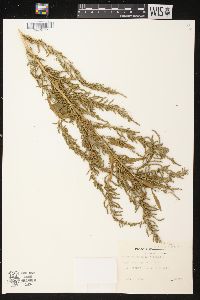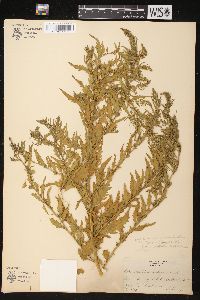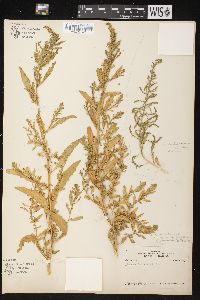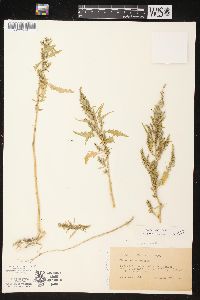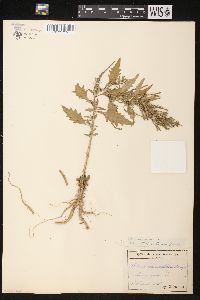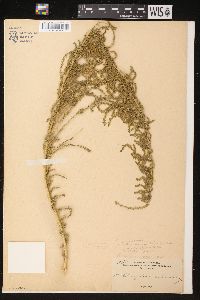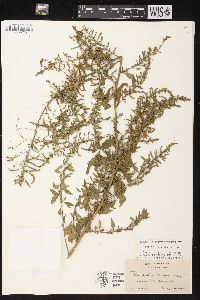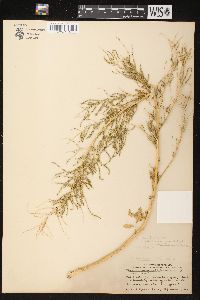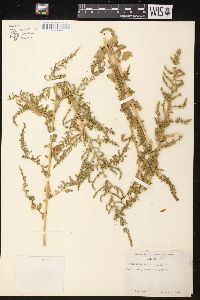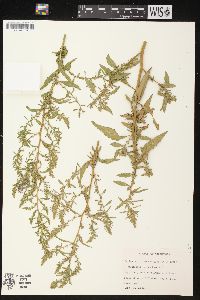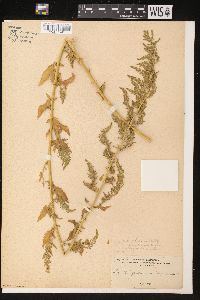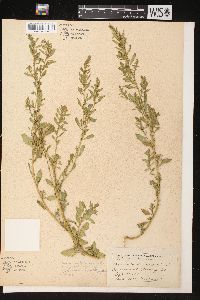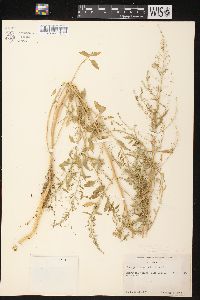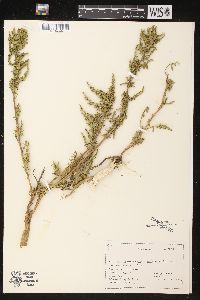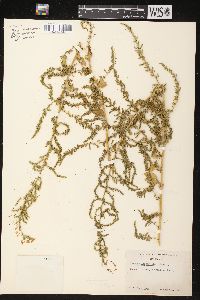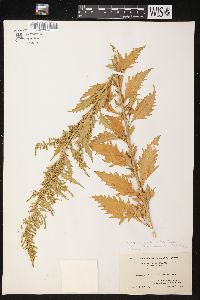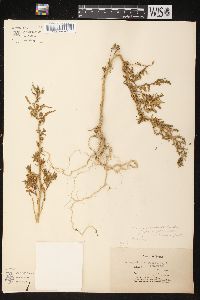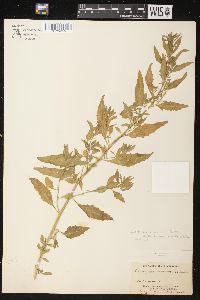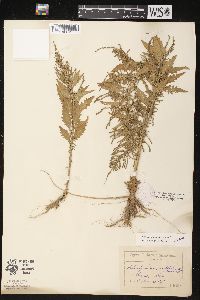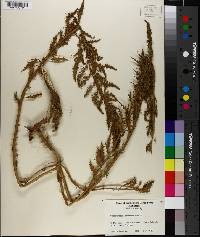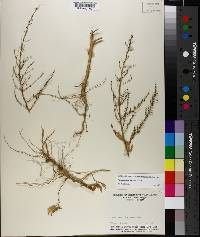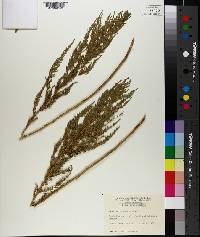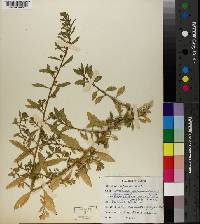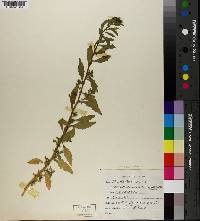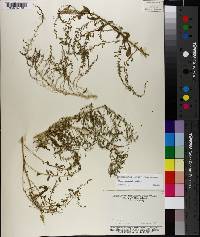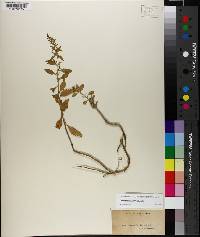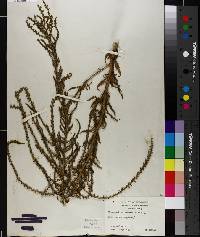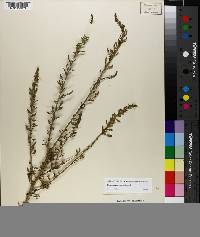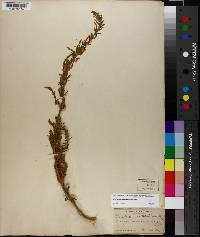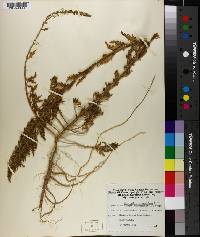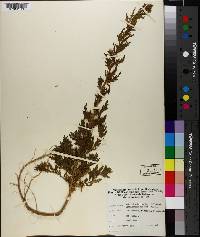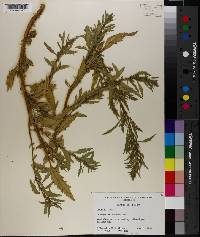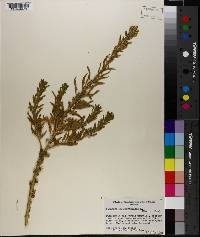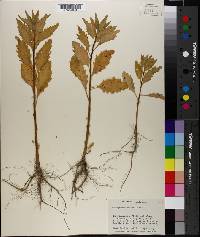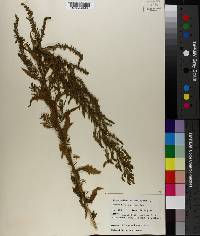Dysphania ambrosioides
|
|
|
|
Family: Amaranthaceae
Mexican tea, more...Mexican-Tea (es: epazote, lipasote, pasote, hipazote)
[Ambrina ambrosioides (L.) Spach, moreAmbrina ambrosioides var. anthelmintica Moldenke, Chenopodium ambrosioides L., Chenopodium ambrosioides ambrosioides , Chenopodium ambrosioides subsp. euambrosioides Aellen, Chenopodium ambrosioides var. ambrosioides Thell., Chenopodium ambrosioides var. chilense (Schrad.) Speg., Chenopodium ambrosioides var. obovatum Speg., Chenopodium ambrosioides var. suffruticosum (Willd.) Asch. & Graebn., Chenopodium ambrosioides var. typicum (Speg.) Aellen, Chenopodium ambrosioides var. vagans (Standl.) J.T. Howell, Chenopodium integrifolium Vorosch., Chenopodium obovatum Moq., Chenopodium retusum Juss. ex Moq., Chenopodium spathulatum (Moq.) Sieber ex Moq., Teloxys ambrosioides (L.) W.A. Weber, Teloxys vagans (Standl.) W.A. Weber] |
Plants annual. Stems erect to ascending, much-branched, 3-10(-15) dm, ± glandular-pubescent. Leaves aromatic, distal leaves sessile; petiole to 18 mm; blade ovate to oblong-lanceolate or lanceolate, proximal ones mostly lanceolate, 2-8(-12) × 0.5-4(-5.5) cm, base cuneate, margins entire, dentate, or laciniate, apex obtuse to attenuate, copiously gland-dotted (rarely glabrous). Inflorescences lateral spikes, 3-7 cm; glomerules globose, 1.5-2.3 mm diam.; bracts leaflike, lanceolate, oblanceolate, spatulate, or linear, 0.3-2.5 cm, apex obtuse, acute, or attenuate. Flowers: perianth segments 4-5, connate for ca. 1/2 their length, distinct portion ovate, rounded abaxially, 0.7-1 mm, apex obtuse, glandular-pubescent, covering seed at maturity; stamens 4-5; stigmas 3. Achenes ovoid; pericarp nonadherent, rugose to smooth. Seeds horizontal or vertical, reddish brown, ovoid, 0.6-1 × 0.4-0.5 mm; seed coat rugose to smooth. Fruiting summer-fall. River bottoms, dry lake beds, flower beds, waste areas; 0-700 m; Ont., Que.; Ala., Ariz., Ark., Calif., Conn., Del., D.C., Fla., Ga., Ill., Ind., Iowa, Kans., Ky., La., Maine, Md., Mass., Mich., Miss., Mo., Nebr., N.H., N.J., N.Mex., N.Y., N.C., Ohio, Okla., Oreg., Pa., R.I., S.C., S.Dak., Tenn., Tex., Utah, Vt., Va., Wash., W.Va., Wis.; native to North America and South America, widely naturalized throughout the tropics and warm-temperate regions of the world. Southern populations of Dysphania ambrosioides are native while those populations in the northern part of the flora area are introduced.
Annual or short-lived perennial herb to 1.5 m tall Stem: upright, branches ascending. Leaves: alternate, short-stalked, to 12 cm long, lower leaves lance- to egg-shaped with a tapering base and pointed tip, nearly pinnate and wavy-margined to merely toothed, progressively less toothed or non-toothed upwards, with tiny yellow glands. Inflorescence: a small, dense cluster of flowers (glomerule), which together form a long, slender, compound spike. Flowers: greenish, stalkless, small, with five sepals and no petals. Sepals glandular. Stamens five. Styles three to four. Fruit: one-seeded, enclosed in the persistent, incurved sepals, thin-walled. Seed horizontal or sometimes vertical, dark brown, shiny, 0.6 - 1 mm wide, thickly lenticular (lens-shaped), without margins. Similar species: No information at this time. Flowering: August Habitat and ecology: Introduced from tropical America. A weed often found in the waste places of towns and cities. Occurence in the Chicago region: non-native Notes: Foul-smelling. Etymology: Chenopodium comes from the Greek words chen, meaning goose, and podion, meaning "little foot," referring to the leaf shape of some species. Ambrosioides means "resembling Ambrosia." Author: The Morton Arboretum Malodorous annual or short-lived perennial, erect, to 1(-2) m, with ascending branches; lvs beset with minute yellow glands, the lower blades lanceolate to ovate, to 12 cm, acute, deeply sinuate-pinnatifid to merely serrate, cuneate at base, the upper progressively less toothed or entire; fls sessile in small glomerules that are disposed in slender, somewhat elongate spikes, these in turn forming terminal panicles; cal 5-lobed, not obviously glandular; styles 3-4; seeds horizontal or some of them erect, thick-lenticular, not margined, 0.6-1 mm wide, dark brown, shining; 2n=16, 32, 64. Native of tropical Amer., established as a weed in gardens, roadsides, and waste places n. to Me. and Wis. Gleason, Henry A. & Cronquist, Arthur J. 1991. Manual of vascular plants of northeastern United States and adjacent Canada. lxxv + 910 pp. ©The New York Botanical Garden. All rights reserved. Used by permission. From Flora of Indiana (1940) by Charles C. Deam A highly polymorphic species of wide tropical distribution, but adventive in the temperate zones. Found mostly in gravelly and sandy soil. Specimens with fewer bracts have commonly been referred to [variety anthelminticum] whose distribution is distinctly southern. It is probably much less common in the state than [variety euambrosioides]. ...... Indiana Coefficient of Conservatism: C = null, non-native Wetland Indicator Status: FAC Diagnostic Traits: foliage with glandular-punctate, malodorous; lower leaves slightly toothed; inflorescences with many bracteoles longer than the adjacent flower-glomerules; fruits glandular-dotted, mostly horizontal, 0.5-1 mm wide. |

